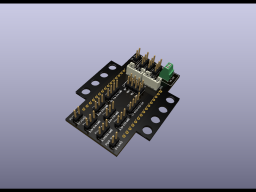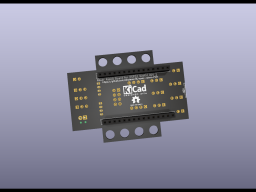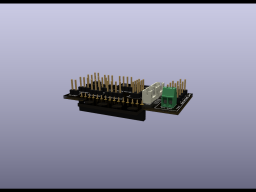In the previous article, I introduced the design of a board for a low-cost robotics kit. After conducting several tests, I realized that the arrangement of the ESP32 microcontroller wasn't the most convenient, and furthermore, there was an issue with power supply, which wasn't sufficient to drive the motors, servo, and use the sensors. I needed to modify the design to change the position of the MCU and introduce separate power for the servos, leaving the L298N motor controller in charge of providing power to the rest of the components. I started to work on this, but at the same time, an idea crossed my mind. What if this time I made it fit into a structure built with Lego?
The idea was appealing because it would allow the kids to have fun building any type of gadget they can think of. However, the adaptation had its challenges because of the initial size of the board, and the only way I saw to reduce it was to place the ESP32 on one side and the rest of the connectors on the other. I looked up the measurements of the blocks and made some initial calculations to see if everything I wanted would fit using a flat piece of 6x8 as a base. Initially, it seemed possible.
It was a bit tricky to redesign it, placing everything I wanted in a more or less logical way. The board can accommodate up to five obstacle sensors (or line detectors), an ultrasonic sensor, an L298N motor controller, and three independently powered sensors.
I sent the boards to be manufactured at JLPCB, and they arrived a few days ago, so testing began. First, I checked that everything fit as planned.
Next, I wanted to verify that the two power points were functioning correctly. I connected a servo and loaded the first program to be executed on the new prototype onto the ESP32.
Then, it was time to connect all possible elements and see if indeed the power supply issue had been resolved.
Currently, everything seems to be working correctly, and it's been a lot of fun testing with these blocks and Arduinoblocks. I haven't been able to do much more, but I've already asked the kids to make some vehicles so we can put everything to use. They haven't started yet, so for now, I'm still playing alone. I think the next step will be figuring out where to house each of the devices to be used (servos, motor controller, etc.) so that things can be easily created with the building blocks
 Español
Español  English (UK)
English (UK) 



